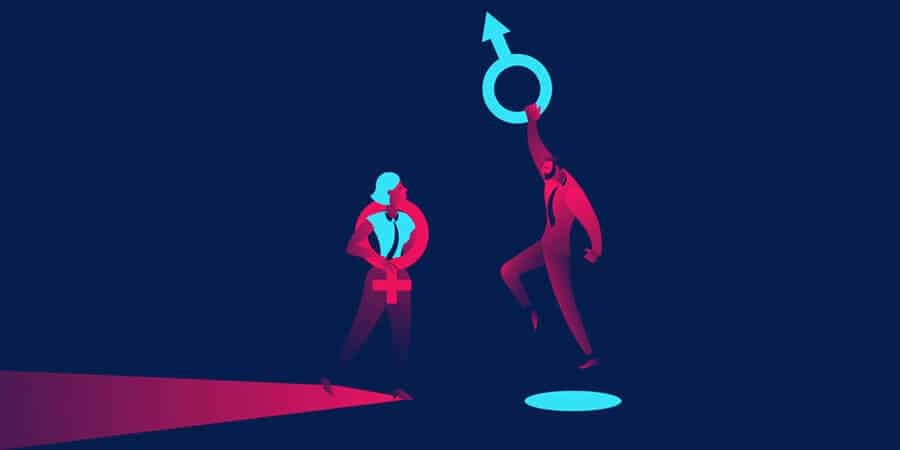Among all the things that this pandemic brought to our attention, probably the most emphasised one is gender inequality, present in all of Europe and the world. Studies made recently show that no attention was given to the different needs of women and men during Covid-19, and the Gender Equality Index tells us that we’re still far behind from achieving gender equality.
As we witness several riots and revolts throughout Europe, with a focus on the protest in Poland – we have to start wondering if we are really headed towards a progressive future for gender equality.
Regarding the reduction of gender inequalities, Europe is taking some measures and is setting different criteria for member states to fulfill, so that they can measure progress. One of these very efficient tools is the Gender Equality Index, developed from the European Institute for Gender Equality (EIGE).
According to EIGE, the Gender Equality Index is a composite indicator that measures the complex concept of gender equality and, based on the EU policy framework, assists in monitoring progress of gender equality across the EU over time. “It examines how elements such as disability, age, level of education, country of birth and family type intersect with gender to create different pathways in people’s lives”.
How does the index work?

Evidently, the index relies on evidence-based proof of gender perspectives present in the policies of the EU member stated. In fact, its most important role consists in informing the EU towards better decision-making processes that consider the different situations and needs of women and men. When measuring progress towards gender equality, the gender equality index considers all circumstances advantageous or disadvantageous to women and men, while of course paying specific and increased attention to the unequal current power relations hindering women’s rights.
The Gender Equality Index measures gender equality in eight areas, called ‘domains’, relevant to the EU policy framework. Six of these domains are combined into a core Index:
- Work
- Money
- Knowledge
- Time
- Power
- Health
Each domain is further divided into sub-domains that cover the key issues within the respective area. The Core Index is complemented by two additional, equally important, satellite domains of violence and intersecting inequalities. They belong to the Index, but do not impact the overall score. The full conceptual framework is presented in the first edition of the Index.
Using this framework, the EU chose 31 very specific indicators to monitor developments in gender equality in the six core domains in every Member State as well as at the EU level. The Index is formed by combining these indicators into a single measure, which allows for the issue of gender equality to be synthesised into one core. Among others, the index examines how elements such as disability, age, level of education, country of birth and family type intersect with gender to create different pathways in people’s lives.
The first edition of gender equality index was launched in 2013, and so far you can find six versions of the index, showing EU countries results on improving gender relations throughout the years.
Findings from the 2020 Gender Equality Index

The EU scored 67.9 out of 100 on the improvement of gender equality, however, the index found that the EU is at least 60 years away from reaching complete gender equality, and that’s only if we continue at the current pace. The fight remains pivotal, considering the very fragile times we’re living in, and considering that some EU countries are in fact taking regressive steps regarding gender equality. The latest Gender Equality Index from the European Institute for Gender Equality (EIGE) shows that the EU is improving by just half a point each year, with Sweden, Denmark and France keeping their top three spots as champions of gender equality. The awards for most improved member states this year went to Italy, Luxembourg and Malta, with each gaining around 10 points since 2010. Greece, Hungary and Romania are lagging behind the rest.
“Gender equality must be sought in all areas of life for all Europeans – regardless of their gender – to reach their full potential. The Gender Equality Index is a crucial tool in this quest as it tracks progress. I congratulate those countries that have improved their score over the past year. Nonetheless, there is still a long road ahead in many aspects, particularly in the digital world. As our present and future is increasingly digital, we need to ensure that women and girls occupy their fair share of this sector and are encouraged to contribute towards its growth.
“The EU Gender Equality Strategy adopted this year sets out key actions for the next 5 years, to step up the work towards equality and we need to see it through and fully implemented to ensure that women and men can be free, will thrive and lead,” said Helena Dalli, European Commissioner for Equality, who was one of the main speakers on the launching event of the 2020 Gender Equality Index.
So why keep an eye on the index?
You can find the full report on the 2020 Gender Equality Index in EIGE’s page. It is important for every person to get a hold of the situation of gender equality in the EU level, who is supposed to lead by example, but also on individual countries. As we are going towards a more futuristic world, gender equality is a value that must be cultivated amongst each culture. The index help countries identify main problematic areas of incorporating gender perspectives, and it helps citizens understand which stereotypes they can diminish in order to work for a better future for women, men, boys and girls.
There are so many things that we have to unlearn and re-learn when it comes down to gender stereotypes and beliefs, but it is never too late to start doing so. Hence, keeping an eye on the gender equality index is just a small step towards a general need for awareness, information and joint activism, regardless of your background.
Photos: Shutterstock
Support us!
All your donations will be used to pay the magazine’s journalists and to support the ongoing costs of maintaining the site.
Share this post
Interested in co-operating with us?
We are open to co-operation from writers and businesses alike. You can reach us on our email at [email protected]/[email protected] and we will get back to you as quick as we can.









